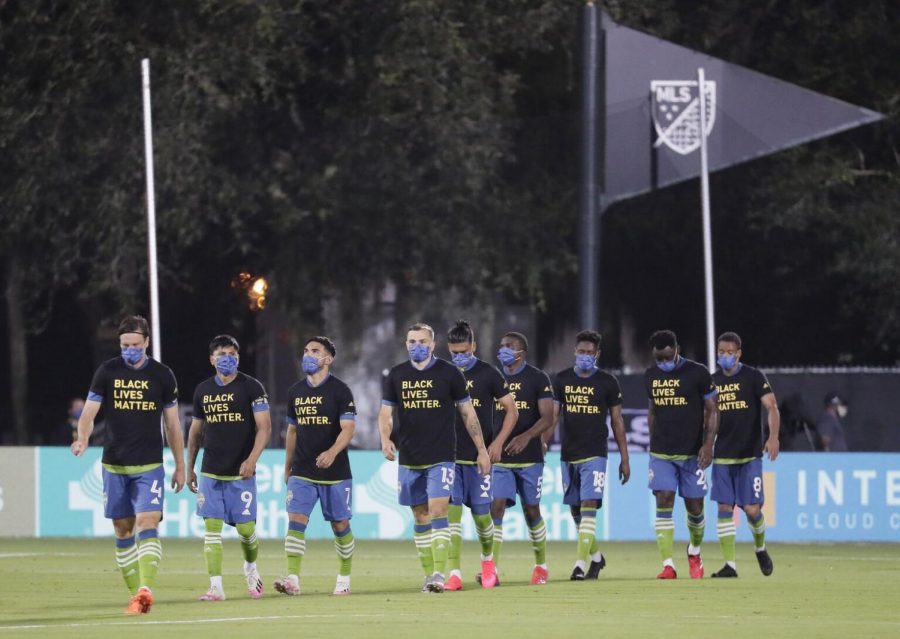COVID Testing: Nurses vs. Athletes
MLS resumed its season in July, first with a bubble-format tournament then finishing with a compressed regular season in home markets, both of which required extensive testing.
December 14, 2020
Sports have always been an escape, offering a reprieve from the normal stresses of life. They temporarily distract us from other problems and provide some form of normalcy in a year that is anything but normal. However, professional athletes have been tested far more than healthcare workers treating patients on the front lines. In an interview with the Washington Post, registered nurse Jane Sandoval said that, in the past nine months, she has never been tested for COVID-19. Her employer won’t provide her with any. In contrast, the NFL provided 43,148 tests for 7,856 people in the span of a week.
Why can’t the people coming into contact with COVID patients daily get the tests they need, when seemingly every professional league in the country can? The simple answer is money. The NFL brings in around $15B annually and can afford to pay private companies for massive amounts of rapid tests. Hospitals and other healthcare providers can’t afford that. There is no simple fix to this problem, but these discrepancies show that right now, nurses and other health care workers are not the priority in the US.
When professional sports started resuming play in the summer, beginning with the National Women’s Soccer League and Major League Soccer, it felt like a return to the pre-COVID days. It was summertime; the sun was out, students were on vacation from school, and professional sports were being played. In a time where the public is desperate for good news, distractions, and a sense of normalcy, sports were there. I’m not going to lie; I definitely have appreciated being able to watch sports again. As a big Sounders fan, I was really excited for them to start playing again. I’ve always looked forward to watching games in the evenings or even watching them in person. The restart made it feel somewhat back to normal, with a bunch of midweek games bookended by big weekend rivalry matches.
I am very lucky. I have healthy family members and friends who are responsible when going out and take proper precautions. I haven’t lost a job, home, or any loved ones. My biggest struggle has been adjusting to online learning and the stress that comes with it, and even then, sports provide an escape from my very minor problems. I get it. That being said, entertainment and distractions should not be prioritized over people who are literal life-savers. Despite what President Trump has said, COVID-19 isn’t simply going to “go away”. As of December 10, we have surpassed 69 million cases globally. The US reports upwards of 220,000 cases per day and is closing in on 290,000 deaths, and these numbers are only rising. With so many hospitalizations, it only seems fair that the people tasked with treating patients should be able to get tested. Sandoval believes that she has been exposed during every shift. There is nothing she can do besides self-monitor, load up on zinc and vitamin C, and seek out a testing center on her own if she shows persisting symptoms.
Originally, the resuming of professional sports leagues meant a several hours-long escape from the real world, where the most pressing issue is whether our team will win. As the pandemic rages on, however, watching these games has sent a stronger message: here in the United States, athletes are more important than healthcare workers.

